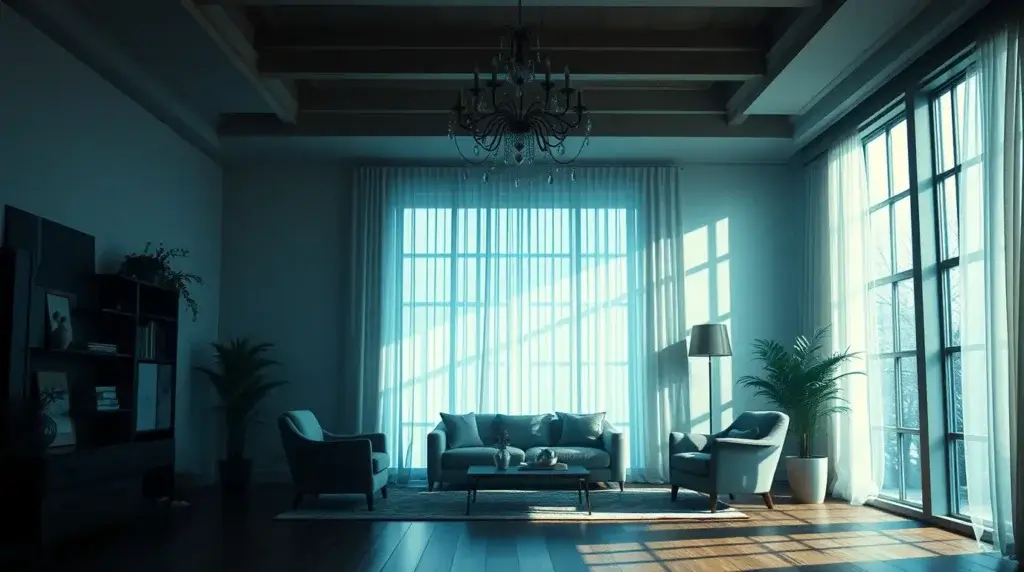Do you dream of transforming spaces into beautiful, functional areas? Becoming an interior designer might be the perfect career for you.
Interior design is a field that blends creativity with practicality, allowing you to create stunning spaces that improve people’s lives. Interior design is not just about picking colors and furniture. It involves understanding space, light, and the needs of the people who will use the space.
This career requires a good eye for detail, a passion for design, and the ability to communicate your vision. Whether you want to work for a design firm or start your own business, becoming an interior designer can be a rewarding and fulfilling career choice. Let’s explore the steps you need to take to enter this exciting field.
How to Become an Interior Designer: A Step-by-Step Guide

Introduction To Interior Design
Interior design is the art of decorating and arranging spaces. It makes places more beautiful and functional. This field combines creativity and technical skills.
Designers work with colors, furniture, and lights. They plan layouts and choose materials. The goal is to create spaces that suit the needs of the people who use them.
Good interior design can improve our lives. It makes homes comfortable and welcoming. It helps businesses attract customers. It can even boost productivity in offices.
Design affects our mood and behavior. A well-designed space can make us feel relaxed or energized. It can make small spaces feel bigger and large spaces feel cozier. Interior design is more than just decoration. It improves how we live and work.
Skills Required For Interior Designers
Interior designers need strong creativity. They must think outside the box. Imagination helps in creating unique designs. Visualizing spaces is a key skill. This helps in making spaces look good. Creativity helps in solving design problems.
Designers must know how to use design software. Computer-Aided Design (CAD) is important. Knowing color theory is also useful. Technical drawing skills are needed. Understanding building codes is important. This ensures designs are safe and legal.
Good communication is crucial. Designers talk to clients and builders. They must explain ideas clearly. Listening is important too. Understanding client needs is key. Effective communication ensures projects run smoothly. This avoids misunderstandings.
Educational Pathways
Getting a degree in interior design is very helpful. Many colleges offer bachelor’s degrees in interior design. Some offer associate degrees. These programs teach design principles. They also cover color theory and space planning. Graduates learn to work with clients. They know how to create beautiful spaces.
Certification programs provide extra skills. These are shorter than degree programs. Some certifications focus on specialized areas. For example, kitchen design or sustainable design. Certifications can make you stand out. They show you have extra knowledge. Many employers value these certifications.
Online courses are great for learning at home. Many websites offer interior design courses. These can be video lessons or interactive tutorials. Online courses let you learn at your own pace. They often cover basic design skills. Some also teach advanced topics. Online courses are often cheaper than degree programs.

Credit: www.youtube.com
Best 5 AI Software for Interior Designer
Explore the top 3D home design software and floor planners to bring your ideas to life! Whether you’re designing interiors, planning house layouts, or enhancing property listings, these tools offer powerful features:
✅ Coohom – Free 3D home design software & floor planner online
✅ Homestyler – Interior home design & 3D house floor planner
✅ Planner 5D – Easy-to-use home design software for realistic 3D modeling
✅ Cedreo – Professional 3D home design tool for both interiors & exteriors
✅ AI HomeDesign – AI-powered toolbox for property listing enhancements
Start designing your dream space effortlessly with these innovative tools!
5 Best Books for Interior Design Students – Must-Read Guides for Stylish Spaces
- Made for Living: Collected Interiors for All Sorts of Styles
- The Interior Design Handbook: Furnish, Decorate, and Style Your Space
- The Art of Home: A Designer Guide to Creating an Elevated Yet Approachable Home
- Live Beautiful
- Beautifully Organized: A Guide to Function and Style in Your Home
If you’re an interior design student looking to enhance your knowledge and creativity, these top books will inspire and guide you. Whether you’re learning the fundamentals or refining your style, these books provide expert insights, practical advice, and stunning visuals.
1. Made for Living: Collected Interiors for All Sorts of Styles
- Author: Amber Lewis
- Publication Date: October 27, 2020
- Price: ~$40.00 USD
- Pros:
- Features over 250 high-quality images of various interior styles.
- Offers practical tips on designing functional and stylish spaces.
- Cons:
- Aesthetic leans towards neutral tones, which may not suit all tastes.
2. The Interior Design Handbook: Furnish, Decorate, and Style Your Space
- Author: Frida Ramstedt
- Publication Date: October 27, 2020
- Price: ~$30.00 USD
- Pros:
- Covers essential design principles, including proportions and layouts.
- Includes clear illustrations for easy understanding.
- Cons:
- Focuses more on theory than visual inspiration.
3. The Art of Home: A Designer’s Guide to Creating an Elevated Yet Approachable Home
- Author: Shea McGee
- Publication Date: September 12, 2023
- Price: ~$35.00 USD
- Pros:
- Provides expert advice on creating elegant yet comfortable interiors.
- Encourages personal expression in design.
- Cons:
- Limited in-depth reviews available.
4. Live Beautiful
- Author: Athena Calderone
- Publication Date: March 3, 2020
- Price: ~$45.00 USD
- Pros:
- Showcases stunning interior designs from top designers.
- Offers inspiration from real-life home transformations.
- Cons:
- Lacks step-by-step guidance on implementation.
5. Beautifully Organized: A Guide to Function and Style in Your Home
- Author: Nikki Boyd
- Publication Date: April 2, 2019
- Price: ~$25.00 USD
- Pros:
- Focuses on decluttering and organization while maintaining aesthetics.
- Provides practical, easy-to-follow home organization tips.
- Cons:
- More about organization than traditional interior design.
Why These Books Are Essential for Interior Design Students
These books provide a mix of inspiration, practical advice, and expert knowledge, making them ideal for aspiring interior designers. Whether you’re looking to master design principles, organize spaces, or find creative inspiration, these books offer valuable insights to elevate your skills.
Explore these must-read interior design books today and take your creativity to the next level!
Gaining Experience
Gain real-world experience through internships. Internships offer a chance to work with experienced designers. Learn the ropes of the industry. Develop skills that books cannot teach. Build a portfolio to showcase your work. Connect with professionals in the field. These connections can help in your career later.
Take up freelance projects to build your experience. Start with small jobs. Offer your services to family and friends. Create designs for local businesses. Each project adds to your portfolio. Gain feedback from clients. Improve your skills based on their input. Expand your network through these projects. It helps to get more work in the future.
Volunteering is a great way to gain experience. Many organizations need design help. Offer your skills to community centers, schools, or charities. These projects help you practice. Showcase your work in your portfolio. Volunteering also makes you feel good. You are helping others while learning. Build connections with people who can refer you later.
How to Build a Strong Portfolio
A well-organized portfolio is essential for showcasing your skills and experience. Whether you’re a designer, photographer, or architect, your portfolio helps potential clients or employers see what you can do. Here’s how to create an impressive one:
1. Choose Your Best Work
Quality is more important than quantity. Select projects that highlight your creativity and expertise. If you’re just starting, consider working on personal projects or volunteering to build your collection.
2. Create an Online Portfolio
A website makes it easy for people to view your work anytime. Here’s what to include:
- High-Quality Images – Use clear, professional visuals.
- Easy Navigation – Make it simple to browse your work.
- About Page – Share your background and skills.
- Contact Information – Provide an email, form, or social links.
- Frequent Updates – Keep it fresh with new projects.
3. Have a Print Version
For interviews or client meetings, a physical portfolio can make a strong impression. Follow these tips:
- Use a Professional Binder – Keep it neat and organized.
- Include Project Descriptions – Explain your work in simple terms.
- Add Client Testimonials – Show proof of your expertise.
- Use High-Quality Printing – Sharp images make a difference.
4. Show Different Types of Work
If possible, include a variety of projects to demonstrate your skills. A designer might showcase branding, web design, and illustrations. An architect could feature residential and commercial designs.
5. Optimize for Search Engines
For an online portfolio, SEO optimization helps attract visitors. Use:
- Relevant Keywords – Include industry-related terms in titles and descriptions.
- Image Optimization – Compress images for faster loading speeds.
- Meta Descriptions – Write clear summaries with targeted keywords.
- Internal Links – Link to your blog or other relevant pages.
6. Keep Updating It
Your portfolio should grow with your experience. Add new projects, update testimonials, and remove older work that no longer represents your best skills.
:max_bytes(150000):strip_icc()/how-to-become-an-interior-decorator-452235_01-83ea096677ef4586999c4ab6a2e2b52e.jpg)
Credit: www.thespruce.com
Networking And Industry Connections
Joining professional associations is key for networking. These groups offer valuable resources. They also provide learning opportunities. Members often receive industry updates. It’s a great way to meet other interior designers. You can share ideas and advice.
Industry events are essential. They help you stay current. Events often feature workshops. You can learn new skills. They also have guest speakers. These experts share insights. Events are perfect for making connections.
Mentors are vital in this field. They offer guidance and support. Mentors can help with career advice. They share their experiences. This can help you avoid mistakes. A mentor can introduce you to important people. This helps you grow in your career.
Finding Employment
Search for jobs online. Use job boards and company websites. Network with other designers. Tell friends and family you are looking. Build a strong resume. Show your skills and experience. Apply to many jobs. Keep trying. Never give up.
Join an agency. They can help you find work. Submit your resume to many agencies. Meet with agents. Discuss your goals. Follow their advice. Stay in touch with them. Ask for feedback.
Create a business plan. List your services. Set your prices. Market your business. Use social media. Build a website. Showcase your work. Get testimonials from clients. Network with other businesses. Stay organized. Manage your time well.
Staying Updated With Trends
Read design blogs to stay updated. These blogs often post new trends and ideas. You can learn a lot from experts in the field. This will expand your knowledge.
Join workshops to learn new skills. These are great for hands-on experience. You can also meet other designers. This helps in building a network.
Always keep learning. Take online courses or read design books. Learning never stops. This keeps you ahead in your career.
Credit: www.markeluk.com
Frequently Asked Questions
What Education Do You Need To Be An Interior Designer?
A degree in interior design or a related field is recommended. Some designers also take specialized courses.
How Long Does It Take To Become An Interior Designer?
It typically takes 2-4 years to complete a degree in interior design. Internships can add more time.
Is Certification Required To Be An Interior Designer?
Certification is not always required. However, it can improve job prospects and credibility.
What Skills Are Important For Interior Designers?
Important skills include creativity, attention to detail, communication, and knowledge of design software. Practical problem-solving is also crucial.
Conclusion
Becoming an interior designer takes dedication and creativity. Start by gaining essential education. Practice your design skills daily. Build a strong portfolio to showcase your talent. Network with industry professionals for growth. Stay updated on current design trends. Remember, patience and passion are key.
Follow these steps, and you’ll be on the right path. Interior design is rewarding for those who love creating beautiful spaces. Keep learning, keep designing, and success will follow.

My name is Mahi Uddin, and I’m a blog writer with over two years of experience specializing in creating engaging, informative content using AI tools. I contribute to InExDecor.com, where I share creative ideas and practical tips for transforming interior and exterior spaces into beautiful, functional environments. With a passion for storytelling and a knack for blending creativity with technology, I strive to craft blogs that not only inform but also inspire readers. When I’m not writing, you can find me exploring design trends or enjoying a good book with a cup of coffee.








